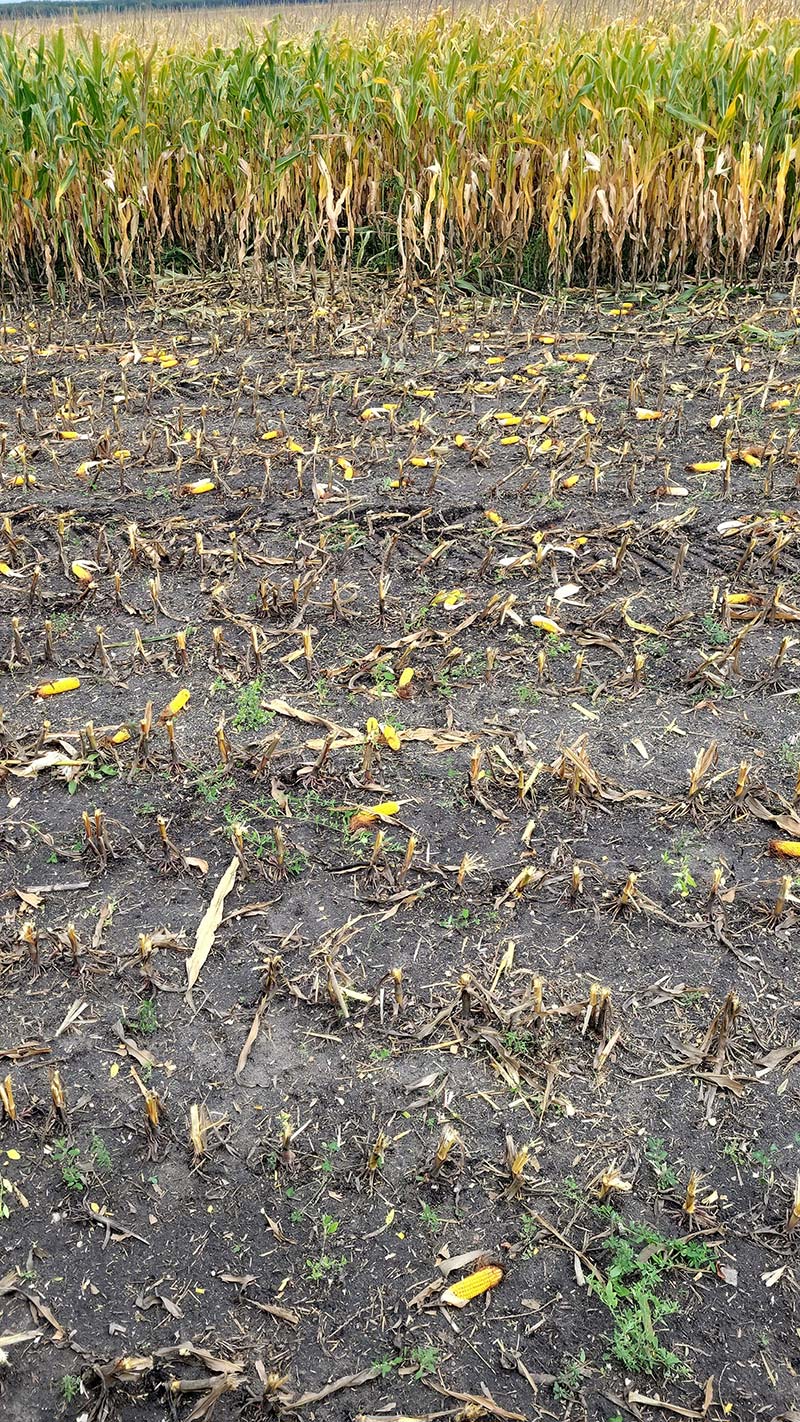Corn Ear Drop

Drought conditions affect a corn crop in many different ways throughout the growing season. Silking and pollination stages are very sensitive to hot, dry conditions. Not only does the lack of rain and extreme temperature cause silks to dry up, poor pollination, and aborted kernels, but these conditions can also interfere with ear shank development.
In drought stress situations, the grain will “steal” carbohydrates from the rest of the plant, including the ear shank, in order to fill and improve quality. As result, the ear shank may become weak and eventually be unable to hang onto the ear as it becomes heavier. Another possible culprit for weakened ear shanks is in a year with rapid drydown in late summer. The cells that connect the ear shank to the ear dry too quickly and become brittle and unable to hold that ear tightly anymore. A disturbance to the corn plant, eg. a silager or combine header, can shake the ear from the plant which results in a complete yield loss for that plant.
Stalk diseases are not common in a drought year, however they are still possible. Stalk rots, such as Fusarium, will weaken the corn stalk and also the ear shank, potentially causing ear drop. Insects like European corn borer will also burrow throughout a corn plant, like in the stalk, ear shank and even the ear, which will weaken those areas of the plant.
This is generally not an issue related to genetics and it would be extremely rare to have a hybrid registered that showed such a glaring default. Ear drop won’t be something that occurs in every field, even if conditions were the same all season long. This will be an effect of planting date, conditions at planting, silking date of the given field and other agronomic factors. In other words, not preventable and simply, bad luck.
To mitigate some yield loss at harvest, combine (or silage) affected fields before any others. When harvesting grain corn, raise header just below cob height and reduce both ground and header speed. When silaging corn, it would be ideal to also raise the header, though that is not going to be popular advice to give a grower. Instead, slow ground speed to the point that you see greatest ear retention.
If there was evidence of stalk rots or insect damage, consider using hybrids with appropriate traits in the future.

Several dropped ears in silage field. Photo credit: Madison Leonard, Clearview Consumers Co-op Ltd., Steinbach, Manitoba.
Article written by Morgan Cott, Agronomy Extension Specialist – Special Crops with Manitoba Crop Alliance.
